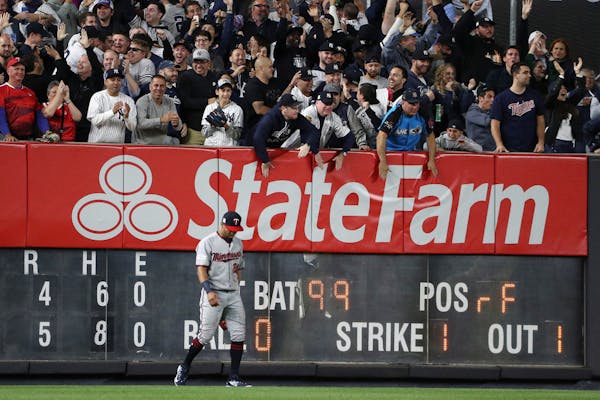In mid-December 2015, I wrote a long piece about then-Wolves guard Ricky Rubio being, at least by one statistical measure, the worst shooter in modern NBA history.
At that point in his career, Rubio had the worst field-goal percentage (.365) of any player in the NBA who had played more than 5,000 minutes since the adoption of the three-point shot in 1979-80.
But Rubio's game was as full of dualities and complexities as anyone in recent Timberwolves memory. To underscore that: Just a couple weeks after that piece was published, Rubio embarked on one of the strangest, most impressive streaks of shooting in NBA history.
Per data from Basketball Reference, Rubio made a technical free throw Dec. 31, 2015, against Detroit. A couple of days later, he went 3-for-3 in one game. Thus began an improbable journey that lasted until Nov. 11, 2017 when Rubio — by then early in his Utah Jazz career — missed a technical free throw.
In that span, Rubio made 60 consecutive technical free throws. When the streak ended, it was reported by The Athletic's Jon Krawczynski to be the second-longest technical free-throw streak in NBA history behind Doug Christie's 73 makes.
So how is someone simultaneously one of the best and worst shooters ever? Well, the answer is probably a combination of a testament to Rubio, the power of confidence and the very nature of free throws themselves.
• First, Rubio has become a decidedly better shooter from the field since that pivotal point in December 2015 — from 36.5% from the field at the time to 41% in the past four seasons combined.
And his free-throw success jumped from about 80% in his first four seasons to 87% in his past four seasons. He was good enough as a free-throw shooter in 2016-17, his final season with the Wolves and during the height of his technical free-throw streak, to rank No. 11 in the entire NBA for the season at 89.1%.
But even as an 87% free-throw shooter, the odds of Rubio making 60 in a row are about one in 5,000.
• But even when he was being written about as one of the NBA's worst shooters, Rubio — as noted earlier — was an 80% free-throw shooter. That's better than average, given the NBA free-throw percentage rate has been remarkably consistent between 74% and 77% for most of the past 50 years.
Free throws, perhaps more than any other shot in basketball, are about practice and repetition. It's the same distance in the NBA, college and high school basketball: 15 feet. And it's always an uncontested shot with limited distractions.
While pure shooters tend to be the best free-throw shooters, even those who struggle from other distances can learn to excel on free throws with the proper technique and enough work.
"You practice, you work hard at it," Rubio said in early April 2017, after his streak of technical free throws reached 48. "And then you just let your mind be free, and just remember what you have done in practice. Focus. Sometimes you miss free throws because you're tired and you don't focus enough in the technique."
• One interesting thing about technical free throws is that there is some evidence suggesting players shoot them worse than regular free throws.
The site 82games.com looked at percentages from the 2005-06 season and found that players shot about 3% worse than expected on technical free throws relative to their overall free throw make rates.
Maybe standing all alone at the line affects players' concentration?
It should be noted that Rubio is 98-for-111 in his career on technical free throws, meaning outside of the 60-make streak he's 38-for-51 — only 74.5%, much worse than his overall career average.
All of which only serves to make an odd streak even more remarkable.



![Naz Reid (11) of the Minnesota Timberwolves Wednesday, March 27, 2024, at Target Center in Minneapolis, Minn. ] CARLOS GONZALEZ • carlos.gonzalez@](https://arc.stimg.co/startribunemedia/TGYNEKQCYNH5VEPCXSJODRMDDM.jpg?w=75&h=75&fit=crop&crop=faces)



